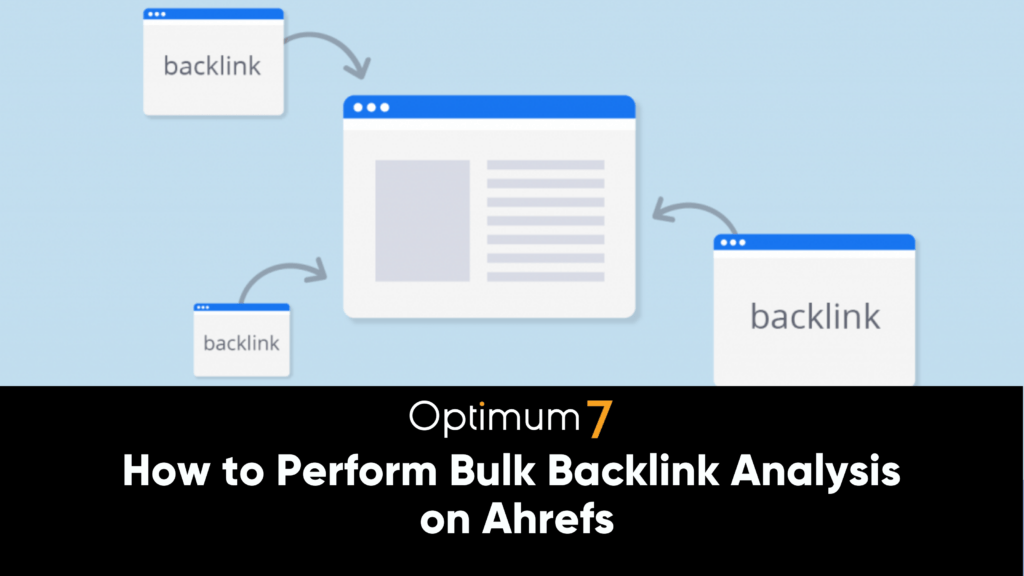Optimizing your site for organic search is critical for anyone running an eCommerce site. It’s the only way to ensure your products are reaching the widest possible audience.
While SEO is important for all websites, it’s even more crucial for Shopify, BigCommerce, and Magento stores. In the eCommerce space, traffic is directly tied to your sales. Even if your conversion rates remain the same, you’ll see a significant increase in revenue as your traffic scales.
Unlike ads or other paid forms of content marketing, SEO is a long-term game. It helps ensure that your site ranks high over time—not just during one specific campaign.
But tackling SEO for an eCommerce site can feel like a daunting task, especially if it’s your first time going through this process. That’s why I created this guide.
There are tons of resources online about SEO for eCommerce, but this one is the most in-depth and comprehensive. If you have a Shopify, BigCommerce, or Magento site, this might be the most important article you read all year.
What is eCommerce SEO, and Why Does it Matter?
Let’s start with the basics. SEO stands for “search engine optimization.” eCommerce SEO is a process that increases the visibility of your online store in SERPs (search engine page results).
So when people browse the internet for products that you’re selling, your website, items, and landing pages can be found through organic search.
Why is this so important?
When people shop online, they typically start their journey with a search engine. As you can see from this graph, it’s more than twice as likely that an online shopper will start on Google as opposed to navigating straight to your site:
Other studies suggest that 48% of all online shopping begins with a search engine.
Without SEO, you’re neglecting nearly half of all potential customers. You’re relying on shoppers going straight to your website, which is a big challenge. First, those people need to know that your brand exists. Second, those shoppers need to know that you sell what they’re looking for. And third, they need to remember that your brand sells what they’re looking for when they’re ready to buy.
There are just too many variables working against you here. But with eCommerce SEO, your products will appear within the organic search results.
Here’s something else to consider. If you’re not ranking on page one of Google for a given search, there’s a slim chance that you’ll get traffic to your website.
Look at this recent study that analyzed the click-through rate based on average Google positions:
The top three results dominate click share. If you’re not in the top six results, there’s less than a 5.3% chance that you’ll get clicks.
In short, the importance of eCommerce SEO can be summed up in a single sentence. Your customers are starting the purchase process from a search engine, and they’re only clicking on the top results.
How to Establish a Winning eCommerce SEO Strategy
We’ll dive into specific SEO tactics for Shopify, BigCommerce, and Magento later on. But first, I want you to understand the big-picture of your eCommerce SEO strategy.
Here’s a basic overview that explains the different components of eCommerce SEO. Once you understand these concepts, you can create a workflow and SEO strategy that addresses all of them:
eCommerce Keyword Research
Keyword research is the backbone of every SEO strategy. The first thing you need to do is create a targeted list of keywords that you want to rank for. Keyword research is a never-ending process. So I recommend starting with a manageable list to get the ball rolling.
Look at your best-selling products and most profitable items. You can even use different tools like Google Search Console to understand which keywords are already driving traffic to your eCommerce store. Prioritize those first.
In addition to the obvious keywords, you’ll ultimately want to look for keyword opportunities that are up for grabs. Rather than trying to compete with the masses, you’ll have a better chance to rank for the low-hanging fruit. To do this, you’ll want to compare the keyword volume against CPC (cost-per-click). These terms may not have a high search volume, but less competition gives you a better chance of ranking high in the SERPs.
On-Page SEO For eCommerce
As the name implies, on-page SEO refers to the user-facing content on your eCommerce site. It’s the keywords being implemented to different areas of your homepage, landing pages, FAQs, product pages, and more.
It encompasses on-page elements like:
- Title tags
- Description tags
- Product categories
- Product descriptions
On-page elements even include things like brand authority and trust scores, like user reviews on your products. These are all opportunities for you to get your target keywords into different areas of your website.
Technical SEO For eCommerce
Technical SEO is a bit more complex. It can best be described as what’s happening behind the scenes of your eCommerce store. For example, let’s say you and a competitor are both trying to rank for the same keywords. All of your keyword research and on-page SEO on the product pages are identical. How will Google decide which one ranks ahead of the other? They’ll look at the technical aspects.
Examples of technical SEO include:
- Site speed
- Site architecture
- UX
- Structured markup
- Indexation and crawl budget
- Redirects
- Broken links
- Duplicate content
To get started with technical SEO, you’ll need to use a tool to run an audit on the technical side of your site. You can run a Google page experience report or use third-party tools like Ahrefs, ScreamingFrog, or SEMrush to help you out here.
Content Marketing For eCommerce
Content marketing and eCommerce SEO go hand-in-hand. The content you’re producing and publishing on your website has a direct impact on your ranking positions.
That’s because Google and other search engines don’t look at the pages of your website in a vacuum. They look at the big-picture and analyze everything as a whole.
For example, let’s say you publish blog posts related to your industry and target keywords. Even those blog readers don’t turn into customers, that traffic is still great for your SEO strategy. Google recognizes sites with high traffic for certain keywords. So you’re rewarded for getting visitors to your site, even if those visitors aren’t buying anything.
So when someone searches for a related keyword that your blogs are ranking for, it also increases the chances that your product pages targeting that keyword will rank high in the SERPs.
eCommerce SEO Checklist: Best Practices For Shopify, BigCommerce, and Magento
Now that you understand the core concepts and categories of eCommerce SEO, it’s time to dive deeper into actionable steps that you can apply. The following tactics are my favorite ways to improve SEO for Shopify sites, BigCommerce stores, and Magento sites:
Target Long-Tail Keywords
Rather than targeting shorter and generic search terms (known as short-tail keywords), it’s in your best interest to research long-tail keywords and prioritize those in your SEO strategy.
Short-tail keywords are much harder to rank for, as the search intent is so broad. Long-tail keywords may not drive as much traffic to your site, but they’re less competitive and they target users with buying intent.
Here’s an example to show you what I mean. Look at the search results for “surfboard rack.”
This short-tail keyword yields over 7.2+ million results. But what is this consumer actually looking for? Is it a surfboard rack for their garage? Car? Bicycle? The term is too broad. If you’re trying to compete for this keyword, you’re wasting time with traffic that may not be interested in what you’re selling.
Now let’s narrow this a bit more, with a search for “surfboard rack for cars.”
Even though the search is slightly more specific, the results aren’t much better. There are still more than 8.2+ million results.
Let’s take this even deeper, and look at a super-specific long-tail keyword—hard surfboard rack for Acura TSX:
The search results here drop all the way to 48,000. There will obviously be much lower search volume here, but your chances of ranking will skyrocket.
Furthermore, anyone searching for this keyword clearly knows what they want. So you won’t have to worry about your site showing them unrelated results, like a hanging surf rack for their garage.
Prioritize Page Speed
Page speed falls into the category of technical SEO. In simple terms, if your site is slow then it won’t rank well—that’s all there is to it.
Google rewards websites with fast loading speeds and punishes those with slower loading times. This is all part of their recent page experience update. It’s all about the user here. Users want pages to load quickly. Google knows this, so they’re going to rank fast-ranking pages higher than slow ranking pages.
This graph does an excellent job showing how page speed impacts ranking positions on Google:
Run a report on Google PageSpeed Insights to see how your website is performing. The report will give you valuable information on what you’re doing well and what needs improvement.
Even a slight boost in page loading speeds can drastically boost the ranking position of your eCommerce site. So don’t take this lightly.
Optimize Your eCommerce Site For Mobile
Mobile web browsing has been trending upward for years now. As mobile usage increases, mobile shopping trends have grown as well.
In fact, 79% of all smartphone users have made an eCommerce purchase from their mobile device.
Google has recognized this trend and started to implement mobile-first indexing for websites. In short, this means that Google uses the mobile version of your site’s content for indexing and ranking purposes.
To keep pace with this change, you need a mobile-friendly website—but this is only the bare minimum. You also need to make sure that all of your keywords, product pages, meta tags, and product descriptions on the mobile version of your site are SEO-friendly as well.
Simplify Your Site Architecture
Site structure refers to the way pages on your site are organized. While a simple site architecture is important for any website, it’s especially crucial in the eCommerce space.
That’s because eCommerce sites tend to have more pages than the average blog or business site, mostly because of the product pages.
Make sure your site structure is scalable. Meaning the same structure you have for 20 products should be replicated for 200, 2,000, or 20,000+ products. You should also make sure that every page is no more than three clicks from your homepage.
Here’s an excellent example of a simple eCommerce site structure:
If you can replicate this architecture model for your Shopify, BigCommerce, or Magento store, you’ll be set up for great SEO.
Build Quality Backlinks
Link building is an often under-utilized SEO tactic in the eCommerce space. But it’s one of the most important aspects of creating a strong domain authority.
Domain authority tells search engines how relevant a website is for a given search. The algorithm is largely based on the quality and quantity of the website’s backlink profile.
This can be difficult for beginners to master early on. You don’t want to come across as a spammer as you’re trying to build links. For example, writing comments on every blog post you can find with a link to your product pages will do more harm than good.
Instead, you need to look for quality link-building opportunities.
One of my favorite ways to build links is through guest blogging opportunities. Let’s say your eCommerce shop sells sports equipment for triathlons. You could reach out to various online publishers in the triathlon space with a pitch for a valuable guest post. This is not an opportunity to pitch your products or use the blog as a way to generate sales. You’re simply adding value to another blog in return for a link to your website.
If you’re regularly getting links from the top triathlon publishers, then it tells Google that your eCommerce shop has a high domain authority—ultimately boosting your search rankings.
Optimize Your Product Descriptions
Product descriptions are crucial for generating eCommerce conversions. But this text is also a highly valuable element in your SEO strategy.
Rather than simply describing the product you’re selling, you should always be looking for opportunities to insert relevant keywords into the description. To be clear, this is not a place for keyword stuffing. You still need to write in natural language and think about your buyers.
Avoid copying and pasting manufacturer descriptions of a product. If other eCommerce sites are sourcing products from the same manufacturer, those descriptions will be duplicated across hundreds or thousands of other websites—this is terrible for SEO.
Check out this product description from UGG, an industry leader in the footwear space:
It’s a simple yet informative description. In addition to describing the product well, this description is great for SEO purposes. It targets keywords like sheepskin boots, lightweight boots, and similar terms that shoppers will be searching for.
Invest in Content
Content marketing is a huge part of SEO. Don’t overlook the importance of your blog.
Publishing quality content on a regular basis is great for search engine exposure. First, it tells Google that your site is being updated regularly, which is always a good signal. Second, it gives you the opportunity to target a wide range of keywords without stuffing them into small product descriptions. Third, it’s an excellent way to drive more traffic to your website.
You can also use your content strategy as a way to weave internal links into your website. These posts can ultimately lead to more backlinks as well, as someone can reference your posts and give you credit with a link back to your site.
Blogs are also highly shareable. So it gives you an excuse to share content besides products on your social media pages and email campaigns.
Optimize For Voice Search
Voice search has been steadily rising for years now. In fact, more than 70% of people say they prefer to search via voice as opposed to typing.
As the quality of voice recognition software continues to improve, people will leverage this technology for more and more purposes. Right now, most people use voice search for playing music, checking the weather, or setting an alarm. But that’s going to change in the near future.
Let’s look at some of the purchases people have made using voice search, as well as purchases those people would consider making:
As you can see, 24% of those surveyed have purchased a book using voice search. An additional 22% purchased homecare items and electronics. In the clothing space, that number drops to just 3%. However, 22% of people would consider buying clothing using voice search.
What does the future of voice search mean for eCommerce SEO?
Start optimizing your content now for voice assistants. Just like there’s a difference between web and mobile search queries, there’s also a difference in the way people search using their voice. If you can recognize these differences and apply them to your keyword strategy, you’ll have a significant edge over your competition as voice search becomes more mainstream for eCommerce products.
Leverage Schematic Markups
Schema isn’t a direct ranking factor. However, it optimizes your search engine listings by adding contextual information to rich snippets.
This can ultimately increase your click-through rates and drive more traffic to your website. In turn, this will be great for SEO purposes.
To leverage this tactic, you need to add code templates from Schema.org to your eCommerce site. Google also has structured data testing tools that you can take advantage of.
Here’s an example of what schematic markups can do for your eCommerce products:
This search result for headphones includes the product’s star rating and the number of reviews. By having information like this directly in the search engine, it shows prospective buyers that the product has a high rating based on lots of customer scores.
The markup alone doesn’t boost the SERP position. But it can entice shoppers to click this link over another option on the page.
Should You Hire an eCommerce Marketing Agency Offering SEO Services?
You can fast-track your eCommerce SEO strategy for Shopify, BigCommerce, and Magento by working directly with an eCommerce SEO agency.
Here at Optimum7, we’ve applied proven strategies to generate results for thousands of clients. In fact, we have more than 100,000+ keywords ranking on page one of Google for our eCommerce clients.
Our team can handle all aspects of your eCommerce SEO strategy. This includes local eCommerce SEO, link building, content creation, technical SEO, mobile search optimization, and more.
To get more information, check out our eCommerce SEO services page and request your free consultation.
Final Thoughts
You can’t compete in the eCommerce space without SEO. This is the best long-term and cost-effective way to drive more traffic to your online store.
Remember, SEO is a long game. You can’t expect to see changes happen overnight. So don’t get frustrated or concerned if you aren’t getting results right away. But over time, you’ll see a steady increase in traffic and ranking position.
Refer back to this guide as you continue to implement more of the tactics I’ve outlined for you. If you still need some help, don’t hesitate to contact Optimum7 for assistance.

















